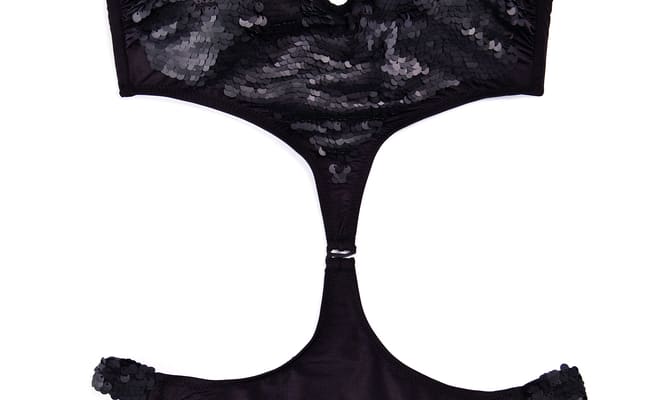The Rise of Sustainable Luxury Underwear Brands
The intimate apparel industry is experiencing a significant transformation as consumers increasingly demand both luxury and environmental responsibility. Sustainable luxury underwear brands are emerging as powerful market forces, combining premium materials, ethical manufacturing processes, and sophisticated design aesthetics. This shift reflects a broader consumer consciousness about the environmental impact of fashion choices, particularly in intimate wear where quality, comfort, and durability are paramount considerations.

The luxury underwear market has undergone a remarkable evolution in recent years, with sustainability becoming a defining characteristic rather than merely an added benefit. Modern consumers are no longer willing to compromise between luxury and environmental responsibility, creating a unique market opportunity for brands that can deliver both premium quality and ethical production methods.
Lingerie Marketing Highlights Style and Comfort
Contemporary lingerie marketing has shifted dramatically from traditional approaches, now emphasising the intersection of style, comfort, and sustainability. Brands are showcasing how eco-friendly materials can enhance rather than compromise the luxurious feel and appearance of intimate wear. Marketing campaigns highlight organic cotton, bamboo fibres, and recycled materials as premium choices that offer superior breathability, moisture-wicking properties, and skin-friendly characteristics. This approach resonates particularly well with consumers who view their underwear choices as both personal comfort investments and environmental statements.
The messaging has evolved to celebrate the craftsmanship involved in sustainable production, with brands sharing stories about their artisans, ethical labour practices, and transparent supply chains. This narrative-driven marketing creates emotional connections between consumers and products, transforming underwear purchases from routine necessities into conscious lifestyle choices.
Popular Luxury Lingerie Collections to Watch
Several luxury lingerie collections have gained significant attention for their innovative approaches to sustainable design. These collections demonstrate that environmental consciousness and luxury aesthetics can coexist beautifully. Leading brands are introducing capsule collections featuring limited-edition pieces made from innovative materials such as TENCEL, organic silk, and recycled lace.
These collections often feature timeless designs with contemporary twists, focusing on versatile pieces that can transition from everyday wear to special occasions. The emphasis on quality construction means these items are designed to last significantly longer than conventional alternatives, justifying their premium pricing through durability and reduced replacement frequency.
Many collections now incorporate modular design principles, where basic pieces can be mixed and matched to create different looks, maximising wardrobe versatility while minimising environmental impact through reduced consumption.
How Eco-Friendly Practices Are Used in Production
Sustainable luxury underwear production involves comprehensive environmental considerations throughout the entire manufacturing process. Brands are implementing closed-loop water systems that recycle and purify water used in dyeing and finishing processes, significantly reducing water waste and chemical runoff.
Organic and responsibly sourced materials form the foundation of these eco-friendly practices. Organic cotton cultivation eliminates harmful pesticides and synthetic fertilisers, while bamboo fibres offer naturally antibacterial properties with minimal processing requirements. Some brands are pioneering the use of innovative materials such as algae-based fibres and lab-grown silk alternatives.
Packaging innovations represent another crucial aspect of sustainable production. Brands are replacing plastic packaging with compostable alternatives, using soy-based inks for printing, and implementing minimal packaging designs that reduce material waste while maintaining the premium unboxing experience expected by luxury consumers.
| Brand Category | Provider Examples | Key Sustainable Features | Price Range (£) |
|---|---|---|---|
| Organic Cotton Luxury | Organic Basics, Boody | GOTS certified organic cotton, plastic-free packaging | 25-80 |
| Bamboo Premium Lines | BAM, Thought Clothing | Bamboo viscose, biodegradable materials | 30-90 |
| Recycled Material Collections | Girlfriend Collective, Parade | Recycled polyester, upcycled lace | 20-70 |
| Innovation-Focused Brands | Cuup, Negative Underwear | Lab-grown materials, zero-waste production | 40-120 |
Prices, rates, or cost estimates mentioned in this article are based on the latest available information but may change over time. Independent research is advised before making financial decisions.
The manufacturing process also emphasises local production networks to reduce transportation emissions and support regional economies. Many luxury sustainable brands partner with small-scale manufacturers who specialise in ethical labour practices and maintain strict environmental standards.
Quality control in sustainable luxury production often exceeds conventional standards, as brands recognise that durability is essential to their environmental claims. Rigorous testing ensures that eco-friendly materials maintain their properties through multiple wash cycles and extended wear.
The rise of sustainable luxury underwear brands represents more than a market trend; it signifies a fundamental shift in consumer values and industry practices. As awareness of environmental issues continues to grow, these brands are positioned to lead the intimate apparel industry toward a more responsible and luxurious future. The success of these initiatives demonstrates that consumers are willing to invest in products that align with their values, creating a sustainable business model that benefits both people and the planet.




